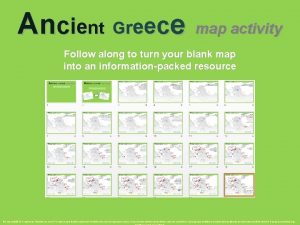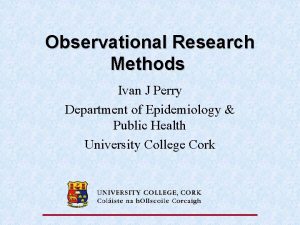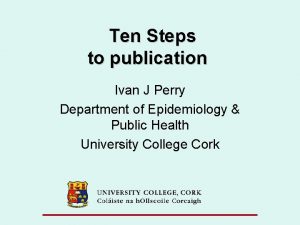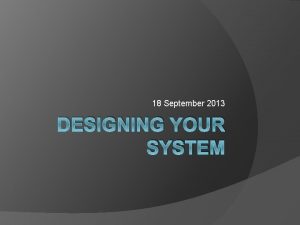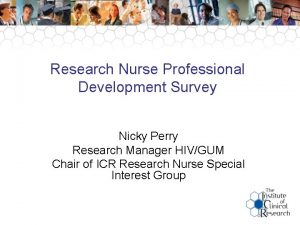Designing your Research Project Ivan J Perry Department














- Slides: 14

Designing your Research Project Ivan J Perry Department of Epidemiology & Public Health University College Cor

Learning objectives • Understand the nature of science, with particular reference to the core concept of measurement of causes and effects • Explain the concept of hypothesis testing in quantitative research and understand the need to specify hypotheses in terms of measurement • Understand that epidemiological methods provide a conceptual framework for the conduct of clinical and population based research. • Understand the need to address bias, confounding and chance in designing your research project. • Understand the importance of sampling and the concept of target populations, study populations and study samples • List the major elements to be addressed in drafting a research protocol

Scenario It is suggested that occupational exposure to volatile anaesthetic agents causes depression. You wish to test this hypothesis.

Seeking to understand the world by a process of observation or experimentation Measurement - core activity Measurement of causes and effects or exposures (gene and environment) and disease To test hypothesis relating cause to effect Hypothesis must be testable/capable of being disproved or refuted

In the late eighteenth century, Antoine Lavoisier, introduced the scientific approach to problem solving: Theory Results Hypothesis Interpretation Observations or Experiment

Question or hypothesis: must be clearly stated (descriptive vs. . analytical research) Would qualitative methods be more appropriate? Science/research: essentially an exercise in measurement Study design: appropriate to question/hypothesis and feasible?

Be as specific as possible (e. g. Prevalence or Incidence) Prevalence of Asthma in children with and without pets at home. Incidence of Diabetes in smokers and non-smokers

Randomised Controlled Trial Case Control Ecological Cohort Quantitative Study Designs Cross-sectional

How will exposure and outcomes be measured? How will validity (accuracy) and reliability (precision) be determined? Are established questionnaires/instruments available? Need for standardised methods to minimise random error (chance) and systematic measurement error (measurement bias).

Define target population: -to whom will the findings apply Study Population: -available for study -sufficiently representative of target population Study Sample: -representative (in statistical sampling terms) of study population Concept of sampling: -variation/sampling error

Study population and study sample? Methods of sampling: random, stratified, systematic, cluster, convenience. Representativeness of sample (selection bias). Methods of recruitment and expected response rate (selection bias) Sample size (chance, type I and type II errors).

Data collection methods, questionnaires (interview or postal), physical measurements, blood tests. Data to be collected (potential confounding variables).

Epi. Data/Microsoft Access Avoid Microsoft Excel Minitab/SPSS

Ethics Committee Informed Consent Confidentiality/Data Protection Conflicts of Interests Research Integrity
 Nature of the study examples
Nature of the study examples You are designing a sticker to advertise your band
You are designing a sticker to advertise your band Give us your hungry your tired your poor
Give us your hungry your tired your poor Kalani perry
Kalani perry Perry glasser
Perry glasser Words that rhyme with park
Words that rhyme with park Vizamyl
Vizamyl Katy perry roar figurative language
Katy perry roar figurative language Kansas nebraska act
Kansas nebraska act Reece map
Reece map William perry jr
William perry jr Trojan labor
Trojan labor Sunrise sunset perry como
Sunrise sunset perry como Idioms in the song roar
Idioms in the song roar Perry’s theory of intellectual and ethical development
Perry’s theory of intellectual and ethical development









